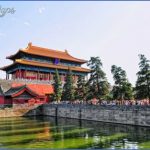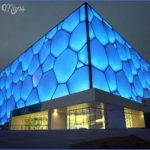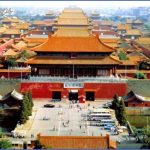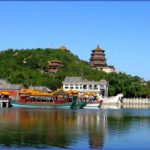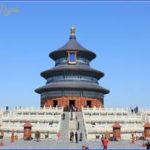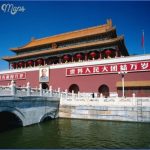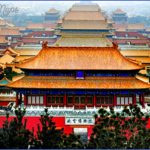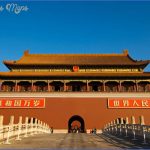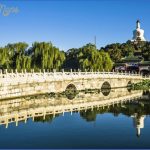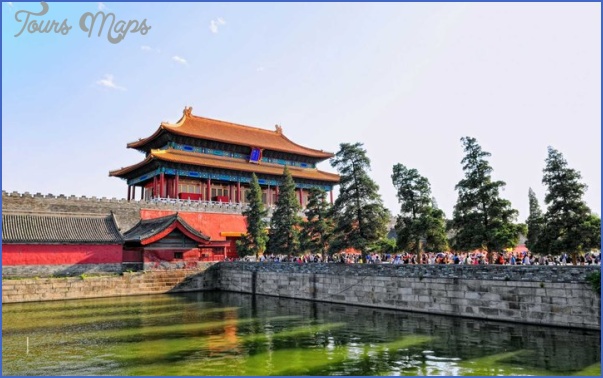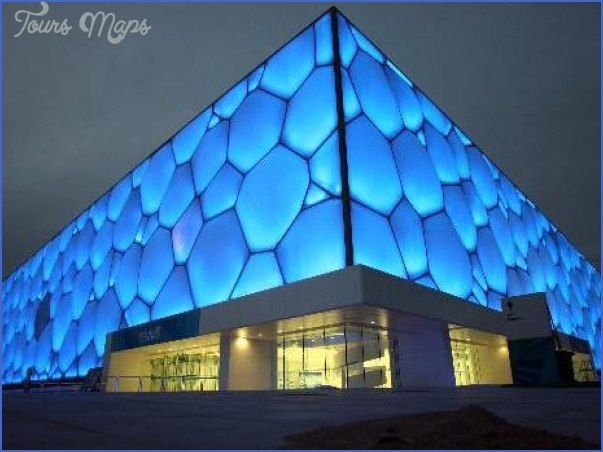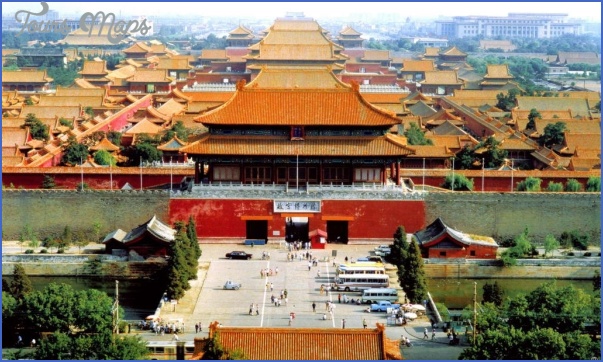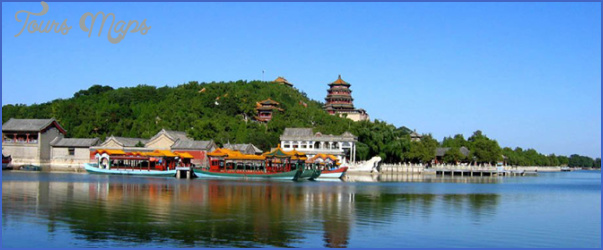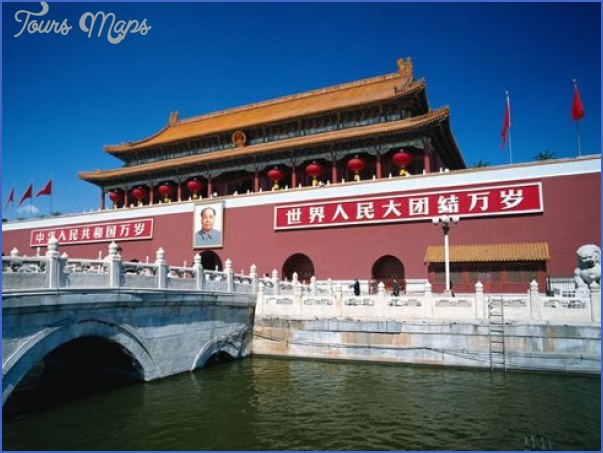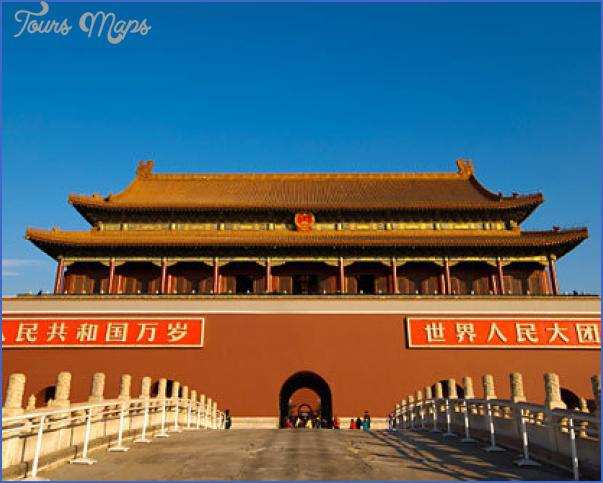Leaving the Hall of Well-being and Longeviety and turning left, we soon reach a fenced-in courtyard where stands the Great Theatre. When it was built in 1891 it was the largest theatre of its time. The empress occasionally attended performances of the Beijing Opera which sometimes lasted several days.
The three-storey stage, into which trap doors were built, is 21 m/68ft high and 17m/55ft wide. The empress sat in the Hall of Exhileration (Yile Dian) opposite during the performances.
Slightly to the west of the Great Theatre is the Hall of Happiness and Longevity which stands on the north bank of the lake; it has a connecting courtyard filled with tropical plants and curious rare stones. It served in summer as a private residence for the Empress Cixi; her winters were spent in the Beijing Imperial Palace.
To the west ofthe Hall of Happiness and Longevity is the beginning ofthe celebrated Long Corridor, which runs along the northern banks of the Kunming Lake. The 728m/796yd long covered walk, made from painted wood, has a roof supported by 273 pairs of columns. It is decorated with 8000 paintings: landscapes, episodes of historical interest and scenes from famous novels of classical Chinese literature.
Half way along the corridor we reach the Pailou (decorated gate), from where the ascent of Wanshoushan Hill begins. The Long Corridor ends at the south-western foot of the this hill.
After passing through the Cloud Dispelling Gate the Yunjin Dian Hall can be seen to the west and the Yuhua Dian Hall to the east. We soon come to the Cloud Dispelling Hall, which is flanked by the halls Fanghui and Zixiao. Empress Cixi’s birthdays were celebrated here. In one ofthe largest halls in this palace are displayed some ofthe Empress’s birthday presents which she received for her 70th birthday. Among these is a painting of Cixi by the Dutch artist Hubert Vos.
Two corridors running parallel to another lead to the Hall of Virtuous Light (Dhui Dian), where steep steps go up to the Pavilion of the Fragrant Buddha.
The 41 m/134ft high, octagonal pavilion with its 20m/66ft high stone pillar is the most important building on the Hill of Longevity. From the top of this pavilion the whole park can be seen.
To the east of the pavilion is the Zhuanlun Zang, an archive of Buddhist manuscripts. A 10m/33ft high stele in the centre ofthe building carries the inscription; “Wanshou Shan, Kumming Hu” (Hill,of Longevity, Kunminghu Lake) by Emperor Qianlong; on the back of the stele is a report on work carried out on the lake.
To the west of the Pavilion of the Fragrant Buddha is the Pavilion of Precious Clouds, finished completely in bronze. On the south side are engraved the names of the craftsman who worked on the building.
On the top of Hill of Longevity stands the Temple of the Sea of Wisdom, which is covered in green and yellow glazed tiles. Inside a gilded Buddha statue is preserved.
Beijing Travel Destinations Photo Gallery
Maybe You Like Them Too
- The Best Cities To Visit in The World
- World’s 10 Best Places To Visit
- Coolest Countries in the World to Visit
- Travel to Santorini, Greece
- Map of Barbados – Holiday in Barbados

